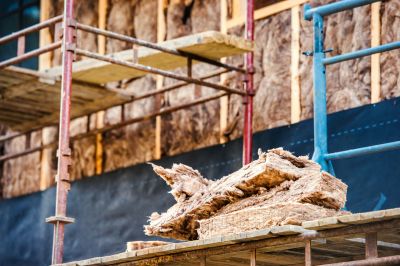5 Things to Know Before Installing Home Insulation

Insulation for your home is certainly a good thing.
In fact, proper insulation has the potential to help heating and cooling systems work more efficiently and contribute to much-appreciated savings with monthly utility bills.
But there are some things you’ll want to know first before installing or replacing home insulation.
#1 Know What Options You Have with Home Insulation
Insulation isn’t going to be fully effective for your home if you don’t weigh your options with the different types available before deciding what kind is right for your home.
For instance, roll insulation is a popular choice since it’s simply rolled into place and made of materials with strong insulating properties like fiberglass. Other options with home insulation include:
- Spray foam insulation, which is good for filling gaps in walls
- Cellulose insulation
- Mineral wool (rock wool) insulation
#2 Know Not to Remove the Vapor Barrier
Fiberglass insulation has a barrier behind it some homeowners automatically remove it when installing it. This is something you don’t want to do because this is a vapor barrier.
It’s intended to block moisture. This backing should also be facing the inside of your home for added protection against mold and rot.
#3 Know What R-Value Means and How It Affects Energy Efficiency
R-value is a common way to tell how energy-efficient home insulation is. It’s a measure of the resistance to heat flow based on the thickness of the material and its ability to minimize airflow.
According to houselogic.com, a properly insulated home can result in heating and cooling savings that range from 10 to 50 percent.
#4 Know There Is Such a Thing as Too Much Home Insulation
From the potential for added savings to creating a more consistently comfortable home environment, there are many things to check off in the “pro” column when considering the pros and cons of home insulation.
The most notable “con” is that there is such a thing as too much insulation. If there is too much insulation in walls or if it’s packed too tightly, it won’t be able to trap air effectively. When properly installed and placed, insulation traps air in your home and allows it to naturally filter out through the other side.
There are some other insulation cons to be aware of with certain materials. Glass fibers, for example, can irritate eyes, lungs, and skin. This is also true with blown insulation.
Precautions also have to be taken with spray foam insulation since it can be toxic if proper protection isn’t used when it’s applied. However, these negatives can be mitigated if you have a professional contractor do the work.
#5 Know Quality Home Insulation Can Be Extremely Cost-Efficient
According to Remodeler Magazine’s Cost vs. Value Report, certain types of top-quality home insulation can have a return on investment as high as 117 percent.
The Insulation Institute further reports that top-quality insulation is cost-efficient because it can add significant value to a home. It’s also an investment that can pay for itself over time in terms of the potential for added savings from increased energy efficiency.
On a related note, fiberglass insulated rolls are also consistently considered highly cost-efficient, explaining why this is the most common home insulation preference in the United States. Home Innovation Research Labs (HIRL) also ranks fiberglass as the most popular insulation material among home builders.
Whether you prefer roll insulation or another type of insulation for your home, make sure it’s properly installed so you can enjoy optimal energy efficiency and cost-efficiency. Also, pay attention to places in your home that tend to be under-insulated, like attics, crawlspaces, and basements.





